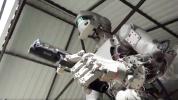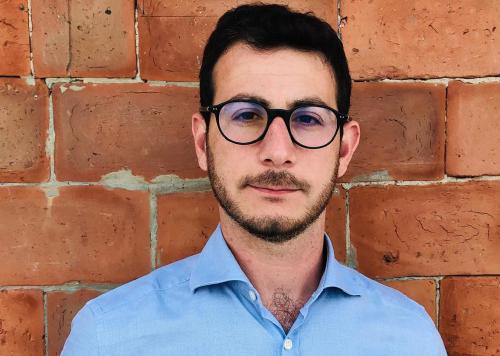Inventing the New World
Can AIs have intellectual property?
This week, the intellectual discussion on artificial intelligence has taken a big step forward. For the first time in history, an AI has been granted a patent, and (as a consequence) has been legally equated to a human being capable of intellectual originality and deserving the protection of such originality.
The story comes from South Africa, where an AI called DABUS (“Device for the Autonomous Bootstrapping of Unified Sentience”) was listed as the inventor of a food container based on fractal geometry, which makes it easier for automated systems to store and locate the items desired. The inventor, DABUS, is part of a family of artificial intelligences, which through advanced machine learning are capable of simulating human brainstorming and even “imagination,” in the words of their creator, Stephen Thaler.

Dr. Thaler requested the recognition of this patent on behalf of the AI he created in various countries, before being granted the rights to this invention in South Africa (and shortly after that in Australia). As AI law expert Meshandren Naidoo reports, this has created a short-circuit in the legal world, since it impacts the possibility of attributing rights and mental agency to non-human intelligences.
Intellectual property rights, which protect “intangible creations” of the intellect, include inventions and designs, but also artistic and literary products. This is the first time that an official body grants a non-human intelligence property over an intangible creation. The conundrum is that most official definitions of IP rights, including the one employed by the World Trade Organization, clearly specify that IP rights can only be attributed to “persons, over the creations of their minds. They usually give the creator an exclusive right over the use of his/her creation for a certain period of time”. The key word here is “person”: are South Africa and Australia granting DABUS a patent implying that an AI is effectively a person and has a “mind”? Or was this a legal mistake? Is the ruling valid or invalid, given that AIs are not juridic persons, as of now?
Apart from the legal debate, the philosophical reasons that spur us to take notice of this news story are multifaceted and pressing. The technologies employing artificial intelligences in the role of problem solvers and solution creators are quickly increasing in number and complexity. In a parallel manner, our conceptual capability of capturing what is meant by “inventing” and “creating” must face some variation, to adapt to the rapidly evolving world of intellectually capable non-human entities. In this brief piece, I would like to point out some such variations, in order to stimulate reflection and discussion about these topics from not just the ethical, or practical, but also the metaphysical point of view.
From a philosophical standpoint, the interesting conundrum brought up by this case is the attribution of “agency” to the AI in question. Even on a superficial reading, many thinkers might have intuitions contrary to affirming that DABUS is “the agent” in this situation and thus deserves to take the credit for the invention of the food container system. In the online debates regarding this case, one of the questions that was asked most often was the following — “what is the purpose of granting the patent to the AI, which has no legal rights and can therefore not enforce its entitlement?”

Computers have a long history of being associated with evilness. Machine minds without emotions suggest cruelty, unfeeling judgement, unflinching execution of inhuman orders.
Such questions can only be answered, on the law front, by legal theory; on the philosophical front, by contrast, we must turn to metaphysics in order to assess what this situation entails and what it means to attribute an “invention” and some “agency” to a non-human intelligence. Part of the problem is represented by the fact that most philosophers would agree that “agency” and “inventing” are somewhat opaque categories. To partially clarify these terms, our best strategy consists in approaching neighboring categories with the aim of uncovering their relational structure. The first, most basic category that can help us in this endeavor is “causality”. To “invent something” is in fact just a subcategory of “causing something” — as causality is perhaps the most general relation involving agency.
Now, here’s where it gets a little technical. In metaphysics, philosophers use three main features to describe relations: symmetry, transitivity, and reflexivity. A classic example of symmetry is a sibling relationship: if I am someone’s sibling, they are my sibling as well. A reflexive relation, by contrast, is one that applies to the same subject — for example, if I convince myself of something, then the subject doing the convincing and the convinced subject are one and the same. Finally, transitivity is perhaps the most intuitive of these features — it involves a relation’s capacity to “be passed on”: for example, if I live on the same street as Peter, and Peter lives on the same street as Paul does, then I and Paul live on the same street. But how is this helpful if we are trying to define what is going on in the case of DABUS and its history-making patent?

Let’s focus first on causality. This kind of relations can typically have both values in all the categories just mentioned: there are cases of symmetrical causality (think about the transference of motion involving two billiard balls) and cases of non-symmetrical causality (parenthood is one of them). There are cases of reflexive causality (when I motivate myself to do something), and non-reflexive causality (when I ask my students to write a paper). Finally, and most importantly for the case at hand, causality can be both transitive and non-transitive. If the sun causes the water to evaporate, causing clouds then it can hardly be said that the sun is causing rain when the water cools off and pours down. By contrast, transitive causality happens when I hit a button on my computer, and that button turns on the computer — I have effectively caused the computer to turn on.
“Invention” is a species of causality. In fact, it is often thought to be a non-reflexive, non-symmetrical, and non-transitive species of causality: I do not invent myself (at best, I discover myself — but that’s a conversation for another day); if I invent a new way to mix peanut butter and chocolate spread, it would hardly be argued that my newly patented “PBC” is inventing me at the same time. And if invention was transitive, then some caveperson could be inferentially credited for all of humanity’s inventions. For example, if Guglielmo Marconi had not invented radio transmitters and receivers, then Charles Francis Jenkins could not have invented television — however, no one would argue that Marconi did actually invent the television.

The creation of Artificial Intelligence (AI) holds great promise, but with it also comes existential risk. How can we know AI will be safe? How can we know it will not destroy us? How can we know that its values will be aligned with ours?
Let us now return to the case of DABUS and its specifics. Did the AI really invent the food container, or should (as several people are arguing) the invention instead be attributed to the person who designed the AI, Stephen Thaler? My argument above proves, I hope, that given our current understanding of “invention,” we cannot make the claim that Thaler invented the food container. That would entail admitting that invention is transitive — something that we are not prepared to do. The metaphysics of invention, as we have adopted them so far in the history of humanity, do not entail transitivity.
This is not, however, the only solution. As of 2021, we have already faced the possibility of granting intellectual property rights to juridic persons who are not humans: think of the rights of exclusive use that companies such as Disney or Google possess over the “creations of the mind” of their employees, to reference the WTO definition. In such cases, we agree that the rights of use and the attribution of an inventor role are distinct; the physical human being coming up with the idea is the inventor, but the company (not a human being) is the beneficiary.
Uncoupling the intellectual property and the rights of use gives us a significant epistemic advantage. On one hand, we are able to attribute to DABUS the role of inventor and the connected patent. On the other hand, we can also agree that DABUS designed the product in its capacity as a member of a workflow structure designed by the programmer, Dr. Thaler. This is not inherently or essentially different from the corporate structure of workflow we are already used to seeing at companies such Disney or Google; the main difference, here, is that the beneficiary of the rights of use also happens to be the designer of the subject who holds the intellectual property. This is arguably a difference in accident, not in essence.

How far does our responsibility extend? What can we rightly be regarded as responsible for? This matters because, looked at negatively it coincides with what we may be blamed or be held culpable for, and looked as positively it coincides with what we might be praised or given an accolade for.
In other words, we do not need to modify our metaphysical understanding of the relation of “inventing”. There is nothing counterfactual about Thaler owning the rights of use — which he is free to make available to the public in open source, as he seems to have decided to do — connected to a product of which DABUS (in turn, “invented” by Thaler) is the rightful inventor. Perhaps we do not yet possess the apt legal apparatus to capture this exact situation (albeit, as I have suggested, we do have comparable cases that are well regulated). Nonetheless, from the metaphysical standpoint, there is no doubt that our understanding of the capacity of invention prove that DABUS is, in all relevant respects, a newly registered non-human inventor.
◊ ◊ ◊

Emanuele Costa is Assistant Professor of Philosophy at Vanderbilt University.
His research is primarily focused on Early Modern Philosophy and Metaphysics, but he also takes a keen interest in showing how the concepts and ideas developed in a different era shape the ways we understand our current world. He is currently completing a manuscript on Baruch Spinoza’s concept of individuality and relationality, and he has an active research project on Anne Conway’s philosophy of transcendence.
More information on the author’s homepage
Cover image by Dariusz Sankowski on Unsplash





